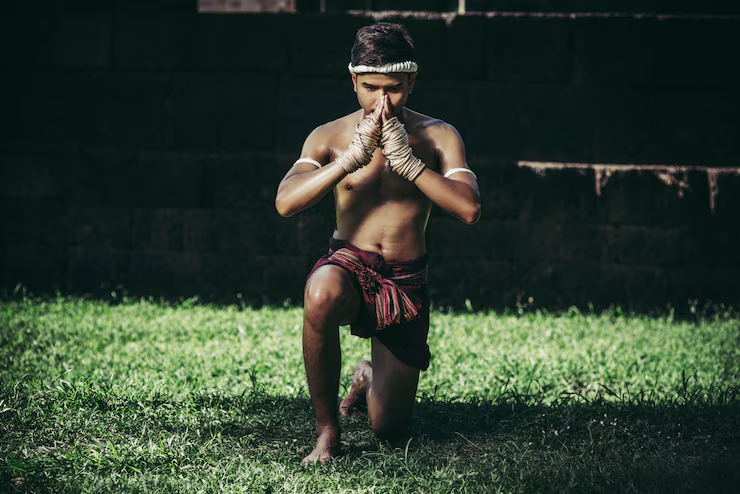
The Tribes of the Andaman Islands
When most people think of the Andaman and Nicobar Islands, pristine beaches and turquoise waters come to mind. But beyond the sun-kissed shores lies a world that’s older than time itself — home to some of the last surviving indigenous tribes in the world. These tribal communities are more than just historical relics; they are living, breathing legacies of human evolution.
At My Tour Guru, while we offer the best Andaman tour packages, we believe true travel is also about connection — not just to nature, but to culture and stories that have endured through centuries.
Tribal Wisdom: A Living Encyclopedia of Nature
To the outside world, tribes may seem “uncivilized,” but if knowledge is power, then these indigenous communities are rich beyond imagination. They can identify the variety of a coconut by sight, predict its taste, and tell how much water it holds. Their survival skills are unmatched — they hunt, gather, and live in perfect harmony with nature, using wisdom passed down through generations.
They are the original inhabitants of the Andaman and Nicobar Islands — long before the arrival of “civilians,” these people thrived here in isolation, preserving a lifestyle that dates back thousands of years.
How Many Tribes Live in the Andaman and Nicobar Islands?
Despite colonization, modernization, and natural disasters, six tribes still exist — four in the Andamans and two in the Nicobars.
-
Negrito Tribes in the Andaman Islands:
-
Great Andamanese
-
Onge
-
Jarawa
-
Sentinelese
-
-
Mongoloid Tribes in the Nicobar Islands:
-
Shompen
-
Nicobarese
-
The Negrito tribes are believed to have migrated from Africa nearly 60,000 years ago, while the Mongoloid tribes came from the Malay-Burma coast a few thousand years ago. Their resilience is a testament to human adaptability.
The Great Andamanese: Warriors of the Past
Once spread across the Andaman archipelago, the Great Andamanese were a fierce, united force. Their valiant resistance against British colonization culminated in the Aberdeen War of 1859 — a historical moment when they bravely fought artillery with bows and arrows. But betrayal from within and exposure to foreign diseases nearly wiped them out.
Today, only a few families survive on Strait Island, speaking mostly Hindi and relying on government aid. While they’ve adopted agriculture and poultry farming, a piece of ancient India still lives within them.
The Onge: The Gentle Guardians of Little Andaman
Living near Dugong Creek in Little Andaman, the Onge are among the oldest tribes in India. They are semi-nomadic, deeply dependent on nature. Though their numbers dwindled post-British colonization, the population has stabilized with the support of modern housing, education, and healthcare.
They’ve also opened up to local communities, making the Onge more accessible to anthropological study — though issues like alcohol addiction among the males remain a concern.
The Jarawa: The People of the Forest
You may have heard of them during a Baratang Island trip — the Jarawa tribe lives along the Great Andaman Trunk Road. Once known for their fierce resistance, they are slowly transitioning from complete isolation to limited interaction with the outside world.
With a population of 250–400, the Jarawa still live as hunter-gatherers, consuming boars, lizards, fruits, and honey. They roam the forests bare-bodied, proudly holding on to their cultural identity, though change seems inevitable with modern encroachment.
The Sentinelese: The Island That Time Forgot
Inhabiting North Sentinel Island, this tribe is perhaps the most isolated group on Earth. Hostile to all outside contact, the Sentinelese have never accepted intrusion — not even food gifts, helicopters, or missionaries. Their fierce protectiveness of their land and way of life has kept them untouched by modern civilization.
The Indian government has declared the island off-limits to all, recognizing their right to live undisturbed. This tribe stands as a powerful reminder of humanity’s untamed roots.
The Shompen: Secrets of the Rainforest
Hidden deep within Great Nicobar’s tropical rainforests, the Shompens are an elusive, semi-nomadic tribe. Living near the Great Nicobar Biosphere Reserve, they are rarely seen and little is known about their way of life.
With a steep population decline in the early 2000s, and increasing contact with Nicobarese settlements, their cultural purity is under threat. But the Shompens still walk barefoot, fashion ornaments from flora, and live off hunting and gathering — untouched by modernity in many ways.
The Nicobarese: Culture, Community, and Celebration
In contrast to other tribes, the Nicobarese are vibrant, sociable, and integrated. They are the most populous tribal group and live in joint families called Tuhet, owning land and livestock collectively.
Their lifestyle is a beautiful mix of traditional and modern — they work in education, healthcare, government jobs, and are known for their love for music, festivals, and community sports. Their craftsmanship includes pottery, basketry, and canoe making, reflecting both artistry and practicality.
Responsible Tourism: A Peek, Not a Poke
At My Tour Guru, we strongly advocate for responsible tourism. While our Andaman budget packages offer a memorable journey through the islands, we ensure that it’s done respectfully and ethically. These tribes are not tourist attractions — they are living cultures, deserving of privacy, dignity, and protection.
By choosing sustainable travel experiences and understanding the importance of tribal preservation, you not only enjoy a meaningful vacation but also contribute to the continued survival of these irreplaceable communities.
Plan Your Culturally Rich Escape
Whether you’re an adventurer, a history buff, or someone seeking deeper travel experiences, the Andaman and Nicobar Islands offer more than just a beach escape — they offer stories that shape our understanding of humankind.
✨ Explore our handpicked Andaman tour packages
💰 Travel smart with our Andaman budget packages
🌿 Travel responsibly with My Tour Guru
Let your next vacation be more than just sightseeing. Let it be a journey through time